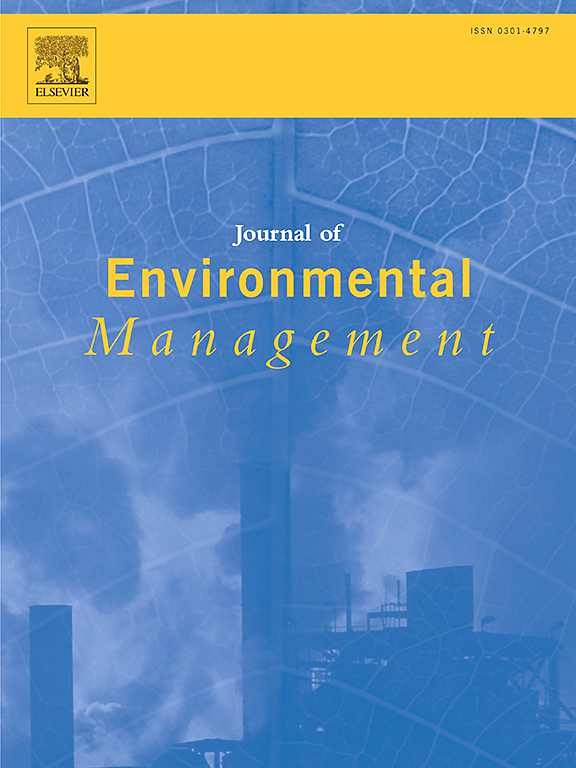Extensive vs. intensive sugar beet production: Energy and environmental performance in Hamadan, Iran (a fuzzy clustering approach)
IF 8.4
2区 环境科学与生态学
Q1 ENVIRONMENTAL SCIENCES
引用次数: 0
Abstract
A substantial body of research indicates that extensive farming systems can offer various benefits compared to intensive systems. However, it is important to note that extensive systems may also have certain environmental drawbacks that could potentially exceed those of intensive systems. The central question is which farming systems demonstrate superior energy and environmental performance. This study examines the environmental implications of extensive and intensive sugar beet production systems in Hamadan Province, Iran, with a focus on the role of energy intensity. A random sample of 88 sugar beet farms was selected for data collection. To differentiate between extensive and intensive sugar beet farms, a c-means fuzzy clustering model was employed to cluster farms based on their energy inputs. The extensive farming system (Cluster I) exhibited lower energy consumption, higher energy efficiency, and reduced environmental impacts compared to the intensive farming system (Cluster II). These results highlight the potential of adopting more sustainable practices, such as improved irrigation management and reduced reliance on chemical inputs, to enhance the environmental performance of sugar beet production. This study provides valuable insights into the energy and environmental implications of sugar beet cultivation in Iran. The findings underscore the need for a shift towards more sustainable farming practices to mitigate environmental impacts and ensure the long-term viability of the agricultural sector. This study successfully employed c-means fuzzy clustering to optimize energy consumption in sugar beet cultivation, thereby enhancing energy and environmental performance.

粗放型与集约型甜菜生产:伊朗哈马丹的能源和环境绩效(模糊聚类方法)
大量研究表明,与集约化耕作系统相比,粗放型耕作系统可以提供各种好处。然而,重要的是要注意到,粗放型系统也可能具有某些环境缺陷,这些缺陷可能超过集约型系统。核心问题是哪种农业系统表现出更优越的能源和环境绩效。本研究考察了伊朗哈马丹省广泛和集约化甜菜生产系统对环境的影响,重点关注能源强度的作用。随机抽取88个甜菜农场进行数据收集。为了区分粗放型和集约型甜菜农场,采用c均值模糊聚类模型对能量投入进行聚类。与集约农业系统(集群II)相比,集约农业系统(集群I)表现出更低的能源消耗、更高的能源效率和更少的环境影响。这些结果突出了采用更可持续的做法的潜力,例如改善灌溉管理和减少对化学投入的依赖,以提高甜菜生产的环境绩效。这项研究为伊朗甜菜种植对能源和环境的影响提供了有价值的见解。研究结果强调,有必要转向更可持续的农业实践,以减轻环境影响,确保农业部门的长期生存能力。本研究成功地采用c-means模糊聚类优化甜菜栽培的能耗,从而提高能源和环境绩效。
本文章由计算机程序翻译,如有差异,请以英文原文为准。
求助全文
约1分钟内获得全文
求助全文
来源期刊

Journal of Environmental Management
环境科学-环境科学
CiteScore
13.70
自引率
5.70%
发文量
2477
审稿时长
84 days
期刊介绍:
The Journal of Environmental Management is a journal for the publication of peer reviewed, original research for all aspects of management and the managed use of the environment, both natural and man-made.Critical review articles are also welcome; submission of these is strongly encouraged.
 求助内容:
求助内容: 应助结果提醒方式:
应助结果提醒方式:


